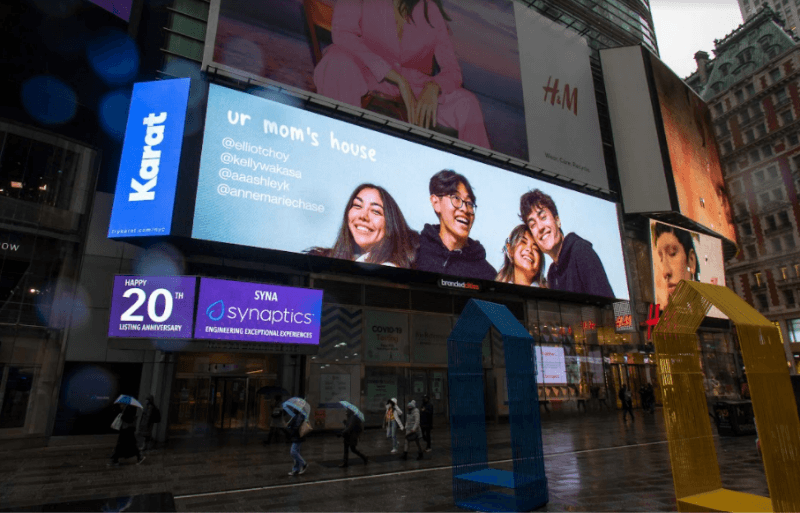When Jared Bell invented the billboard in the 1830s he couldn’t possibly have dreamed of a day when his outdoor advertising invention would be transformed by the invention of digital technologies. Today billboards have expanded to a wide range of out-of-home advertising opportunities. And, like everything else in the modern world, these platforms have gone digital.
So we now have digital out-of-home, or DOOH.
Yes, DOOH stands for digital out of home, but it stands for many things well beyond its acronym.
For starters, it represents everything that traditional OOH stands for — standing out from the crowd, thanks to exceptional:
Visibility
Unlike online advertising, OOH can’t be blocked or deleted. In many cases, ads are on display 24/7.
Choice
OOH is the only marketing channel that is media-rich, with a multitude of sizes and types and location options.
Creative
With so many media options and location possibilities, content can catch the eye and inspire engagement like never before.
But add that “D” to OOH and it’s easy to see why DOOH is becoming an advertising must-have for brands and marketers. DOOH stands for:
Dynamic
Digital technology is what allows you to add lights and sound and action to your ads. And with the advent of high-definition screens, your content looks brighter and crisper than ever.
Content can be virtually anything. Digital can make a static billboard look like the lights of Broadway, but it can also incorporate images that move or video. That means you can not only amplify your omni-channel campaigns with greater reach, you can present the same content as audiences see online or on TV.
LED trucks take advertising on the road to reach drivers and pedestrians on the move or meet up with people congregating at a public venue.
Interactive screens that use QR codes, for example, give viewers a way to immediately connect with your brand. They can also invite consumers to engage on the spot by playing a game or personalizing a product or taking a survey.
Deep data
Because digital OOH is data-driven, there are greater opportunities for geo-targeting. You can reach audiences where you know they will be (downtown, at the grocery store or the gas station, headed to the airport, etc.). But you can also direct them to nearby locations such as a restaurant or live event.
DOOH is ideal for hyperlocal targeting, which in turn is ideal for presenting contextually relevant or time-sensitive content.
Digital technology also enables programmatic automation, a process that can simplify ad creation, buying and distribution. You can schedule an ad to run in multiple locations and/or in multiple cities. Ads can also be scheduled to change with the time of day, the weather, or other factors.
Digitally available data also allows marketers to use essentially the same metrics that are used to measure online advertising to measure and attribute performance of DOOH.
We mentioned cameras earlier. That’s because digital OOH can be outfitted with cameras that enhance both targeting and measurement.
Cameras enable proximity-based targeting that personalizes ad display depending on who’s viewing. They can also visually verify reach and frequency and capture data about viewer engagement.
Dizzying lift
Here at OneScreen.ai, we added digital billboards to a Facebook advertising campaign, and increased our Google search results by 331%! And, by the way, we spent a mere $2,207.19 on the entire campaign.
DOOH delivers the goods
Digital out-of-home delivers audiences. Consumers love that OOH has gone digital and they are hungry for more.
DOOH delivers engagement. With broad capabilities to reach consumers wherever they are out in the real world with intriguing, contextually relevant content, OOH creates memorable experiences. The kind that audiences not only remember but memorialize in photos and videos to share with their friends on social media.
And DOOH delivers conversions. Give consumers what they want, and of course they’ll connect.
